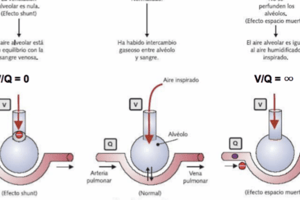Podcast
Questions and Answers
What is the main regulator of the ovarian cycle?
What is the main regulator of the ovarian cycle?
- Insulin
- Progesterone
- Follicle-stimulating hormone (FSH) (correct)
- Estrogen
Which hormone stimulates the rupture of a mature ovary follicle during ovulation?
Which hormone stimulates the rupture of a mature ovary follicle during ovulation?
- Gonadotropin-releasing hormone (GnRH)
- Luteinizing hormone (LH) (correct)
- Follicle-stimulating hormone (FSH)
- Estrogen
What is the main function of granulosa cells in the ovarian cycle?
What is the main function of granulosa cells in the ovarian cycle?
- Maturation of the oocyte (correct)
- Initiation of ovulation
- Release of estrogen
- Production of progesterone
Which gland releases gonadotropin-releasing hormone (GnRH) to initiate the ovarian cycle?
Which gland releases gonadotropin-releasing hormone (GnRH) to initiate the ovarian cycle?
What leads to the release of an oocyte during ovulation?
What leads to the release of an oocyte during ovulation?
What is the primary function of the corpus luteum?
What is the primary function of the corpus luteum?
During which phase does the corpus luteum form on the ovary?
During which phase does the corpus luteum form on the ovary?
What hormone is responsible for preparing the endometrium for embryo implantation?
What hormone is responsible for preparing the endometrium for embryo implantation?
What leads to declining levels of progesterone and estrogen in the ovarian cycle?
What leads to declining levels of progesterone and estrogen in the ovarian cycle?
Flashcards are hidden until you start studying
Study Notes
Understanding the Ovarian Cycle
Introduction
The ovarian cycle is a critical aspect of human reproduction, involving various hormonal events that lead to ovulation and preparation for potential pregnancy. This process is tightly regulated and synchronized through complex interactions between the hypothalamus, pituitary gland, and ovaries.
Regulation of the Ovarian Cycle
The ovarian cycle is regulated primarily via the hypothalamic-pituitary-ovarian (HPO) axis. The hypothalamus releases gonadotropin-releasing hormone (GnRH), which stimulates the anterior pituitary gland to produce follicle-stimulating hormone (FSH) and luteinizing hormone (LH). These hormones regulate different aspects of the ovarian cycle.
Phases of the Ovarian Cycle
The ovarian cycle consists of three main phases: the follicular phase, ovulation, and the luteal phase. Each phase is characterized by specific hormonal fluctuations and physiological changes.
Follicular Phase
During the follicular phase, the follicle develops in response to FSH. As FSH and LH levels rise, they stimulate ovulation, which involves the rupture of a mature ovary follicle and the subsequent release of an oocyte, also called an ovum or egg, into the fallopian tube.
Granulosa Cells
Granulosa cells are essential components of the follicle and play crucial roles in the maturation process of an oocyte within its follicle. They produce hormones and growth factors that support the developing oocyte and help maintain the follicle throughout this phase.
Ovulation
Ovulation marks the transition from the follicular phase to the luteal phase. During ovulation, a mature ovary follicle ruptures and discharges an ovum into the fallopian tube.
Luteal Phase
In the luteal phase, the corpus luteum forms on the ovary and secretes hormones, notably progesterone. Progesterone prepares the endometrium for implantation of an embryo. If implantation occurs, the corpus luteum is maintained; otherwise, it degenerates, leading to menstruation.
Corpus Luteum Functions
The primary function of the corpus luteum is to secrete progesterone, which supports the endometrial preparation for implantation. Additionally, the corpus luteum contributes to the production of fertile cervical mucus, further facilitating the transport of sperm towards the ovum.
Hormonal Changes
Progesterone, produced by the corpus luteum, suppresses the action of FSH and LH, causing the corpus luteum to gradually atrophy. The death of the corpus luteum leads to declining levels of progesterone and estrogen, subsequently increasing FSH levels, promoting the recruitment of new follicles for the next cycle.
Conclusion
The ovarian cycle is a continuous process of hormonal regulation and physiological changes that enable reproduction in humans. Its successful execution relies heavily on the complex interplay of the hypothalamus, pituitary gland, and ovaries.
Studying That Suits You
Use AI to generate personalized quizzes and flashcards to suit your learning preferences.




